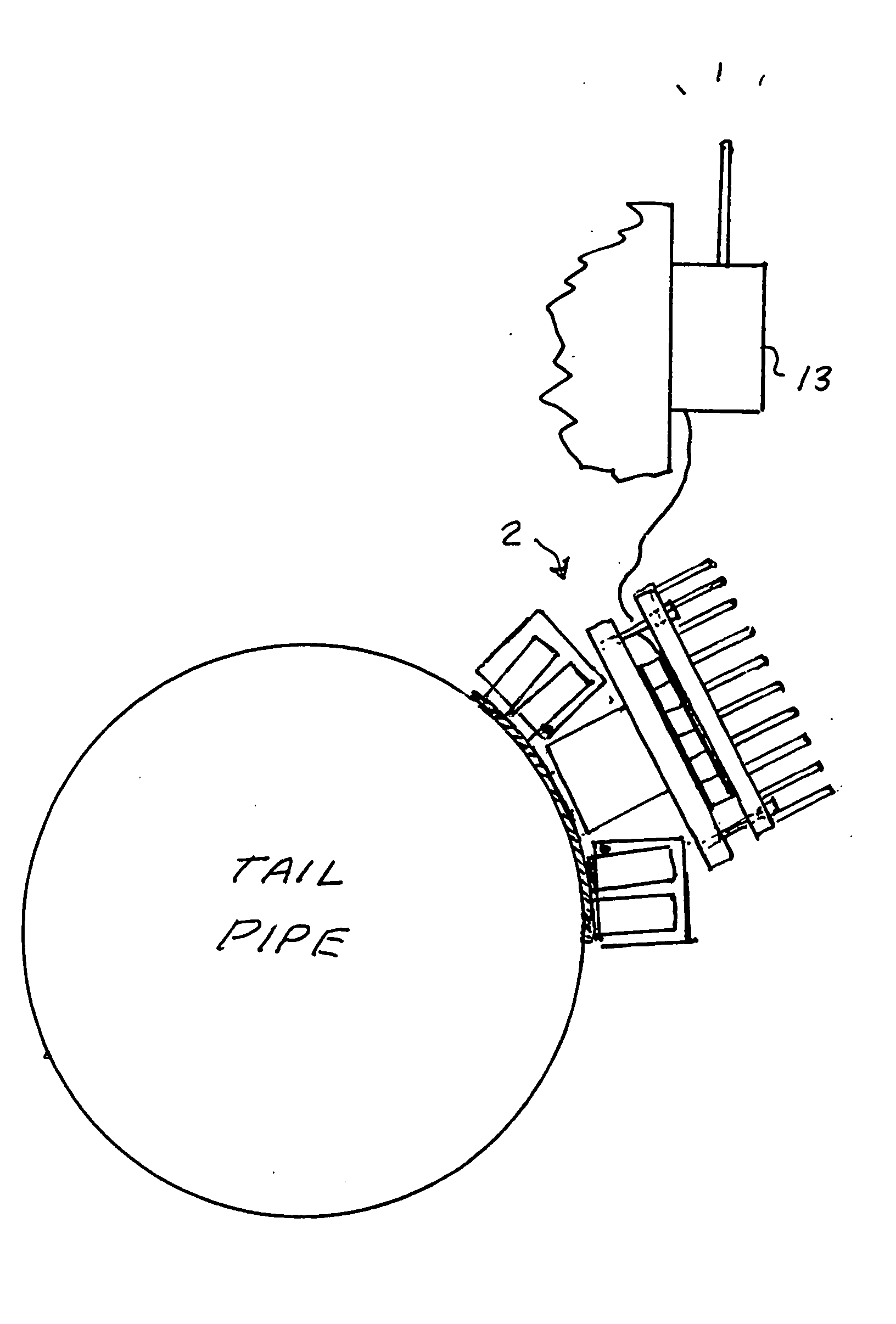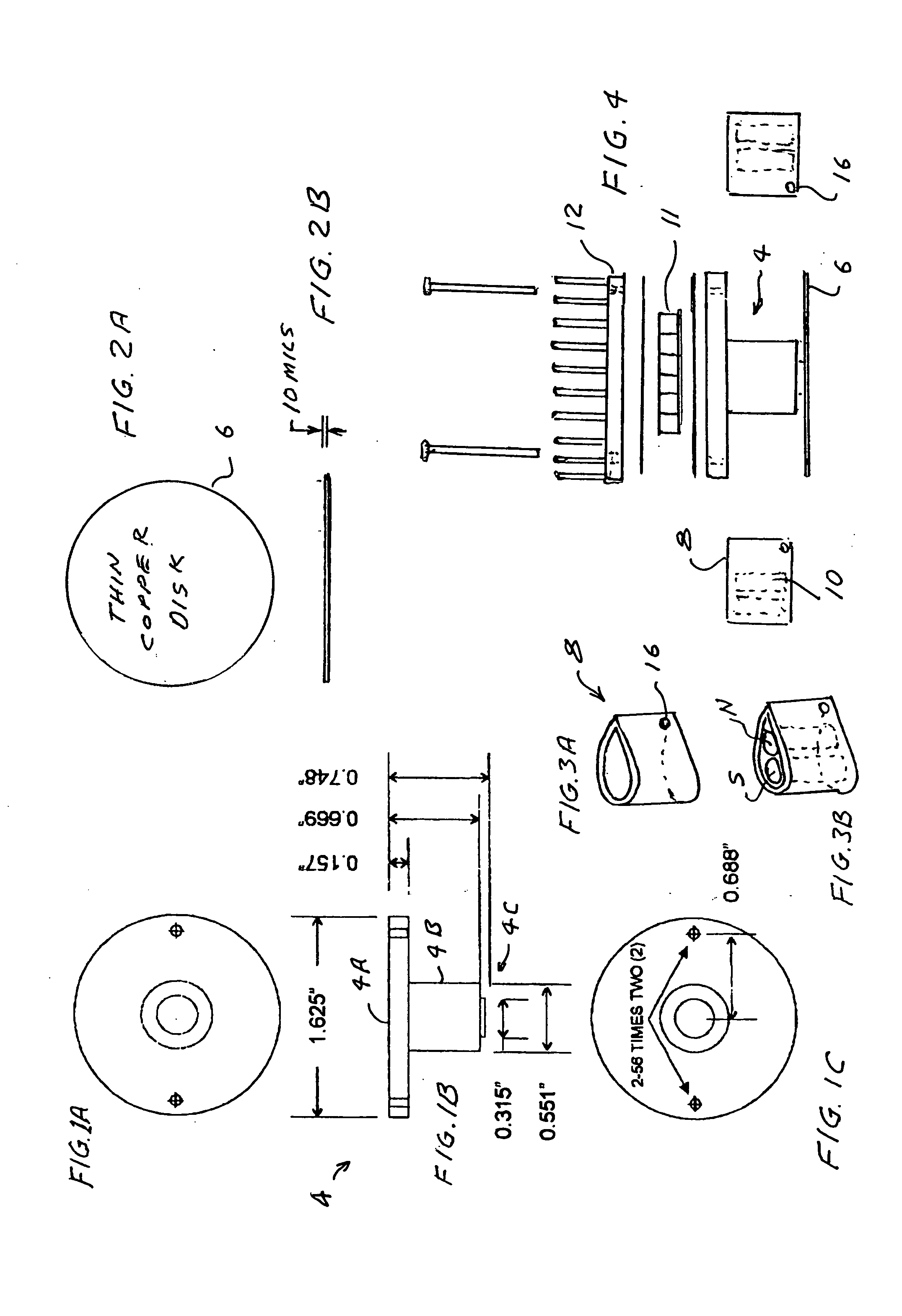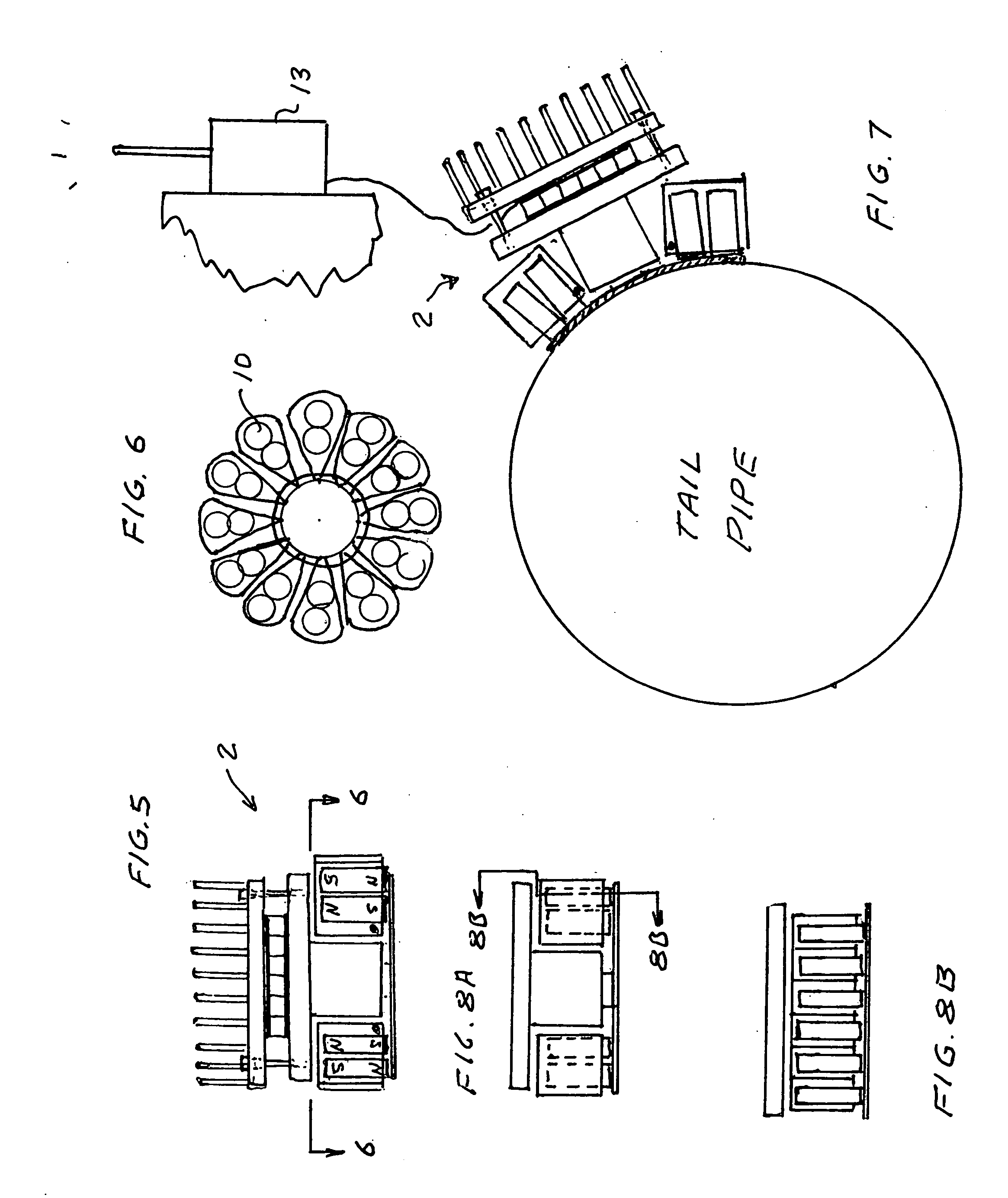Quick attaching thermoelectric device
a thermoelectric device and quick technology, applied in the direction of thermoelectric device with peltier/seeback effect, thermoelectric device junction materials, electrical apparatus, etc., can solve the problems of limited useful life and not much success, and achieve the effect of quick attachment and improved thermal conductivity
- Summary
- Abstract
- Description
- Claims
- Application Information
AI Technical Summary
Benefits of technology
Problems solved by technology
Method used
Image
Examples
first preferred embodiment
[0014]FIGS. 1A through 7 show the basic features of a first preferred embodiments of the present invention. In this embodiment a thermoelectric generator is attached to a cylindrical steel tail pipe of a motor vehicle with the magnetic force of a plurality of magnets that compresses a thin flexible high heat conducting element against the tail pipe. Preferably, the thin flexible high heat conducting element is a thin copper disk and it is braised to a thin bottom portion of a copper pedestal that has a wider flat upper portion. The wider flat upper portion is the heat source of a thermoelectric module that is compressed between an aluminum fin unit functioning as a heat sink and the flat upper portion of the pedestal. Insulating wafers on both the hot and cold sides to the thermoelectric module provide electrical insulation of the module from the copper pedestal and the finned heat sink. Heat conducting grease is used to improve thermal conductivity. In this preferred embodiment 24 ...
second preferred embodiment
[0016] A second preferred embodiment of the present invention is shown in FIGS. 8A and 8B. This unit is exactly the same as the generator of the first preferred embodiment except the thin bottom part of pedestal 4 is rectangular rather than circular. This second preferred embodiment is useful for attachment to flat and cylindrical surfaces but would not attach very well to spherical surfaces. Also, when attaching it to cylindrical surfaces care must be taken to line it up with the axis of the cylindrical surface. It should attach very well however to tail pipes and mufflers of motor vehicles.
[0017] While the above description contains many specificities, the reader should not construe these as limitations on the scope of the invention, but merely as exemplifications of preferred embodiments thereof. Those skilled in the art will envision many other possible variations within its scope. For example: [0018] The bismuth telluride N and P legs used in the thermoelectric module can be r...
PUM
 Login to View More
Login to View More Abstract
Description
Claims
Application Information
 Login to View More
Login to View More - R&D
- Intellectual Property
- Life Sciences
- Materials
- Tech Scout
- Unparalleled Data Quality
- Higher Quality Content
- 60% Fewer Hallucinations
Browse by: Latest US Patents, China's latest patents, Technical Efficacy Thesaurus, Application Domain, Technology Topic, Popular Technical Reports.
© 2025 PatSnap. All rights reserved.Legal|Privacy policy|Modern Slavery Act Transparency Statement|Sitemap|About US| Contact US: help@patsnap.com



